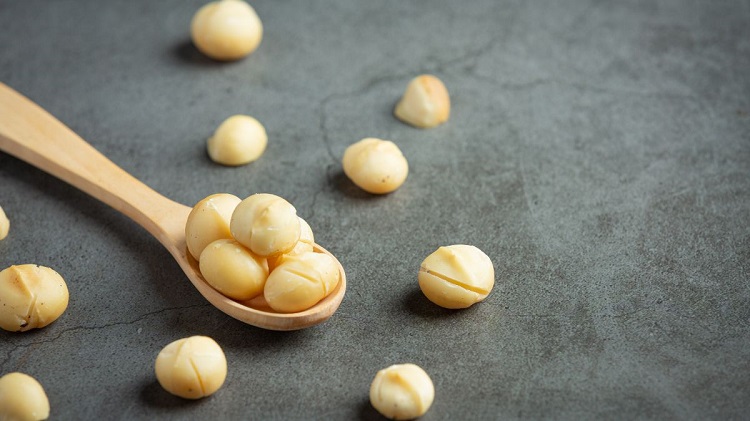In the realm of culinary fusion, where traditional recipes meet contemporary tastes, Soymamicoco emerges as a delightful innovation. Combining the rich heritage of soybean-based cuisine with the exotic allure of coconut, Soymamicoco presents a symphony of flavors that tantalize the palate and ignite the senses. In this exploration, we delve into the origins, ingredients, preparation, and cultural significance of Soymamicoco, unraveling its journey from humble beginnings to global gastronomic acclaim.
Origins and Evolution:
The genesis of Soymamicoco can be traced back to the intersecting culinary traditions of East Asia and Southeast Asia. Soybean, a staple ingredient in East Asian cuisine for centuries, forms the backbone of Soymamicoco. Renowned for its versatility and nutritional benefits, soybeans have been integral to the diets of diverse cultures, from China and Japan to Korea and Vietnam.
Coconut, on the other hand, adds a tropical twist to this culinary narrative. Widely cultivated across Southeast Asia, coconut lends its distinct aroma and creamy texture to a myriad of dishes, from curries to desserts. The fusion of soybean and coconut creates a harmonious blend of flavors, bridging the culinary divide between East and Southeast Asia.
Ingredients and Preparation:
The preparation of Soymamicoco begins with the selection of high-quality soybeans and fresh coconuts. The soybeans are soaked, boiled, and ground into a fine paste, yielding the base for various Soymamicoco dishes. Meanwhile, the coconut is grated, and its milk extracted to infuse dishes with its signature sweetness and aroma.
Common ingredients used in Soymamicoco recipes include garlic, ginger, lemongrass, chili peppers, and an array of spices such as turmeric, cumin, and coriander. These ingredients are sautéed to release their flavors before being combined with the soybean-coconut mixture, creating a rich and aromatic sauce that forms the essence of Soymamicoco cuisine.
Culinary Diversity:
Soymamicoco encompasses a diverse range of dishes, each offering a unique culinary experience. From hearty stews and creamy curries to savory stir-fries and fragrant soups, Soymamicoco adapts to a multitude of cooking styles and flavor profiles.
One of the most beloved Soymamicoco dishes is the “Tofu Coconut Curry,” featuring tender chunks of tofu simmered in a luscious coconut-infused sauce, seasoned with aromatic spices and fresh herbs. This dish exemplifies the marriage of creamy coconut with the wholesome goodness of soy, creating a dish that is both comforting and nourishing.
For those seeking a lighter option, the “Soymamicoco Salad” offers a refreshing blend of crisp vegetables, marinated tofu, and shredded coconut, tossed in a tangy soy-lime dressing. This vibrant salad showcases the versatility of Soymamicoco, transforming simple ingredients into a culinary masterpiece.
Cultural Significance:
Beyond its culinary appeal, Soymamicoco holds cultural significance as a symbol of culinary innovation and cross-cultural exchange. By marrying the culinary traditions of East Asia and Southeast Asia, Soymamicoco celebrates diversity and fosters cultural appreciation.
In countries where soybeans and coconuts are abundant, Soymamicoco serves as a testament to the resourcefulness of local communities, who have creatively incorporated these ingredients into their culinary repertoire. Moreover, Soymamicoco reflects the interconnectedness of global cuisines, highlighting the ways in which food transcends borders and brings people together.
Global Impact:
In recent years, Soymamicoco has gained traction on the global culinary stage, captivating the palates of food enthusiasts and chefs alike. Its unique flavor profile and health-conscious appeal have made it a favorite among those seeking innovative plant-based dishes.
Restaurants specializing in Soymamicoco cuisine have emerged in major cities worldwide, offering diners a taste of this exotic fusion. Moreover, food manufacturers have introduced Soymamicoco-inspired products, ranging from tofu spreads to coconut-infused sauces, catering to the growing demand for plant-based alternatives.
Conclusion:
Soymamicoco represents a harmonious fusion of culinary traditions, blending the time-honored flavors of soybean-based cuisine with the tropical allure of coconut. From its humble origins in East Asia and Southeast Asia to its global culinary acclaim, Soymamicoco embodies the spirit of culinary innovation and cultural exchange.
As we continue to explore the diverse tapestry of global cuisines, Soymamicoco stands as a shining example of the transformative power of food to unite, inspire, and delight. Whether enjoyed in a traditional home-cooked meal or savored at a trendy restaurant, Soymamicoco invites us on a culinary journey that transcends borders and celebrates the rich tapestry of human culture.
FAQs on Soymamicoco
1. What is Soymamicoco?
Soymamicoco is a culinary fusion that combines the rich flavors of soybean-based cuisine with the tropical sweetness of coconut. It encompasses a variety of dishes ranging from stews and curries to salads and soups, all featuring a harmonious blend of soybean and coconut ingredients.
2. Where does Soymamicoco originate from?
The origins of Soymamicoco can be traced back to the culinary traditions of East Asia and Southeast Asia, where soybeans and coconuts are abundant. It is a product of cultural exchange and innovation, bringing together ingredients from diverse culinary backgrounds.
3. What are the key ingredients in Soymamicoco dishes?
Key ingredients in Soymamicoco dishes include soybeans, coconut, garlic, ginger, lemongrass, chili peppers, and a variety of spices such as turmeric, cumin, and coriander. These ingredients are combined to create flavorful sauces and marinades that form the basis of Soymamicoco cuisine.
4. Is Soymamicoco suitable for vegetarians and vegans?
Yes, Soymamicoco is suitable for vegetarians and vegans as it primarily consists of plant-based ingredients such as soybeans and coconut. It offers a delicious and nutritious alternative to traditional meat-based dishes, making it popular among those following plant-based diets.
5. What are some popular Soymamicoco dishes?
Some popular Soymamicoco dishes include Tofu Coconut Curry, Soymamicoco Stir-Fry, Coconut Lemongrass Soup, and Soymamicoco Salad. These dishes showcase the versatility of Soymamicoco cuisine and can be customized with various proteins, vegetables, and spices according to personal preferences.
6. How is Soymamicoco different from other cuisines?
Soymamicoco stands out for its unique combination of soybean and coconut flavors, which sets it apart from other cuisines. While soybean-based dishes are common in East Asian cuisine and coconut-based dishes are prevalent in Southeast Asian cuisine, Soymamicoco brings these two culinary traditions together in a seamless fusion.
7. Can I find Soymamicoco dishes outside of Asia?
Yes, Soymamicoco dishes can be found in restaurants and eateries worldwide, particularly in urban areas with diverse culinary scenes. As the popularity of plant-based cuisine continues to rise, Soymamicoco has gained traction among food enthusiasts and chefs seeking innovative and flavorful dishes.
8. How can I make Soymamicoco dishes at home?
To make Soymamicoco dishes at home, you will need basic ingredients such as soybeans, coconut, garlic, ginger, and spices, along with protein sources such as tofu or tempeh. There are many recipes available online that provide step-by-step instructions for preparing Soymamicoco dishes, allowing you to experiment with different flavors and ingredients in the comfort of your own kitchen.
9. Is Soymamicoco suitable for people with food allergies?
While Soymamicoco dishes are generally plant-based and free from common allergens such as dairy and eggs, it’s essential to check individual recipes for potential allergens such as nuts or gluten. If you have specific food allergies or dietary restrictions, you can adapt Soymamicoco recipes to suit your needs by substituting ingredients or omitting allergens altogether.
10. What makes Soymamicoco special?
Soymamicoco is special because it represents a harmonious fusion of culinary traditions, bridging the gap between East Asian and Southeast Asian cuisine. Its unique flavor profile, versatility, and cultural significance make it a beloved culinary innovation that continues to inspire and delight food enthusiasts around the world.



